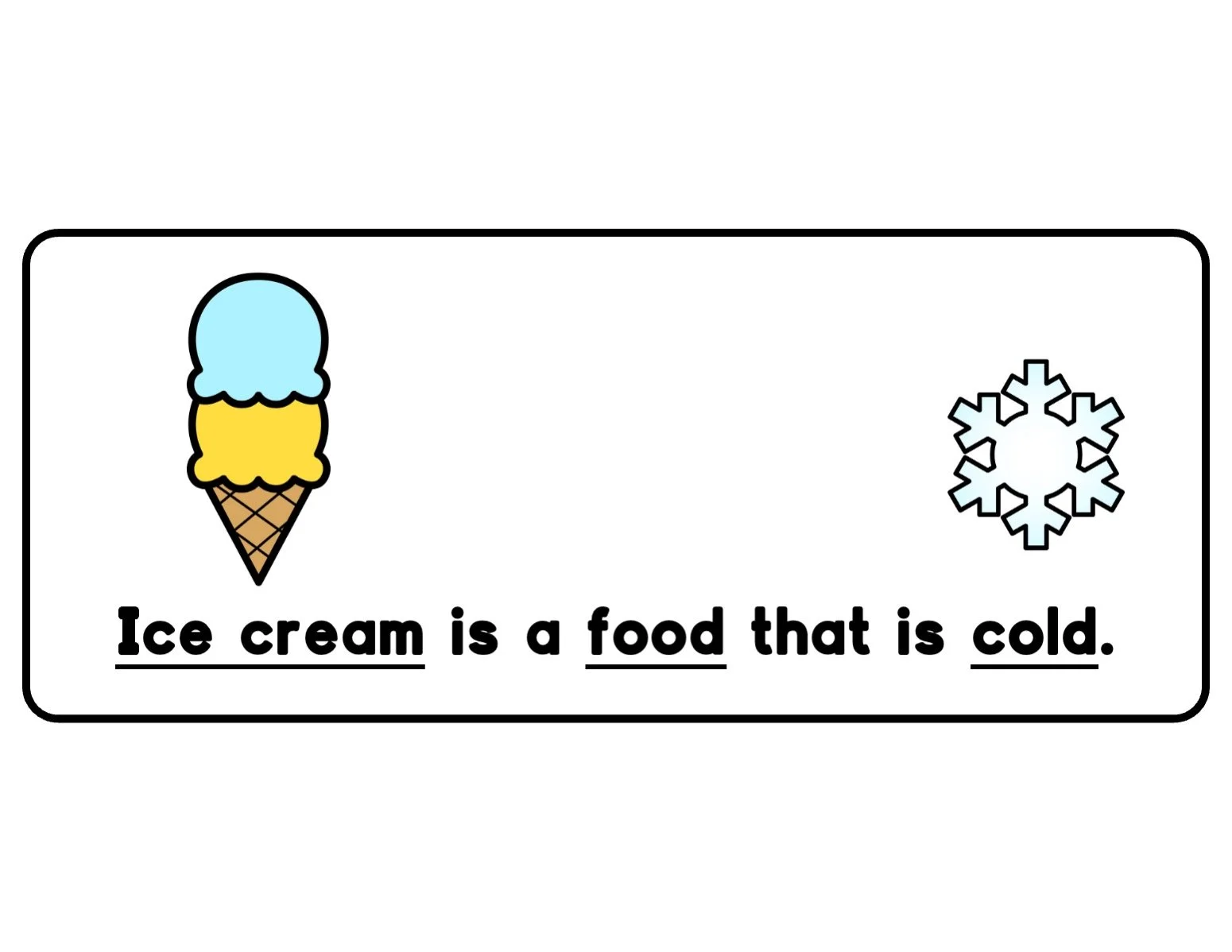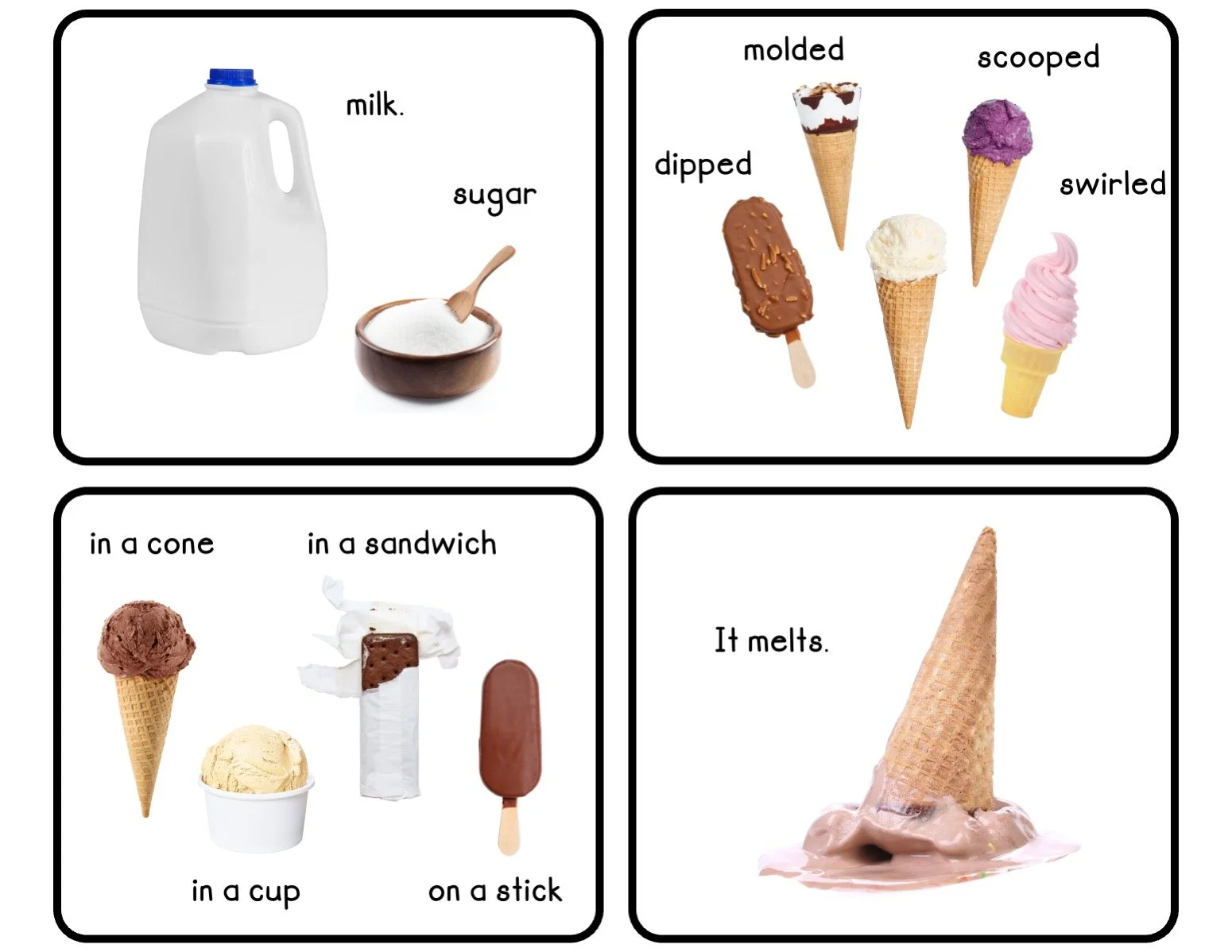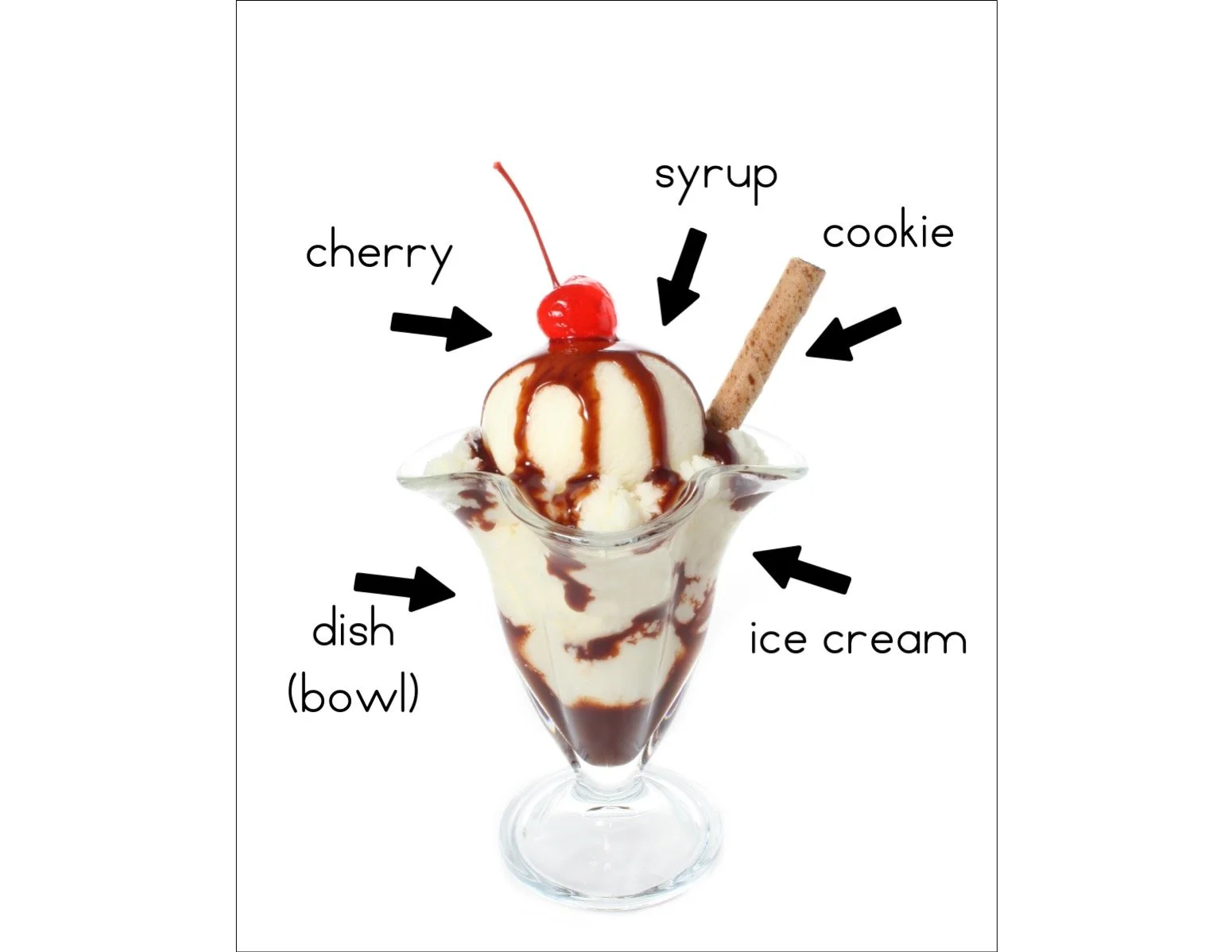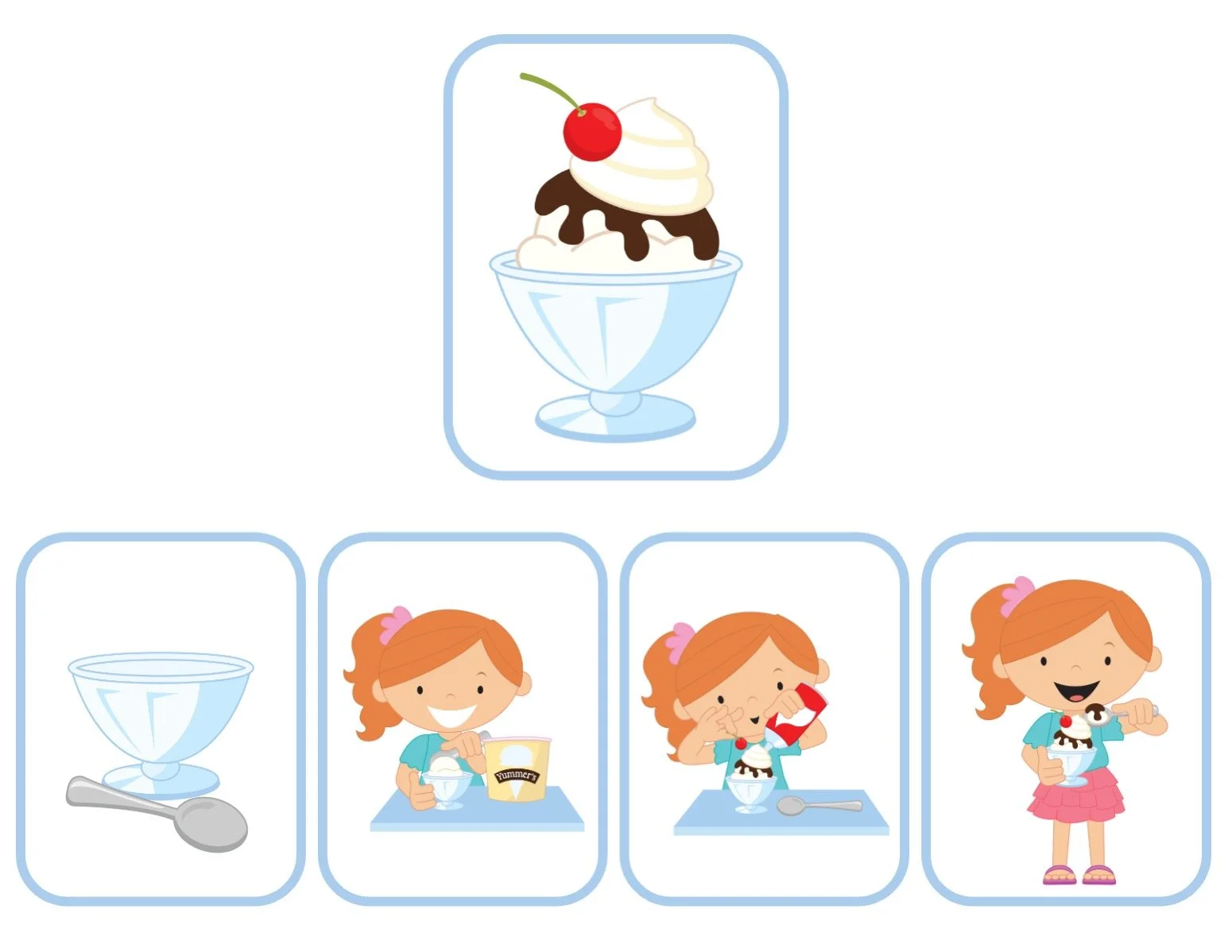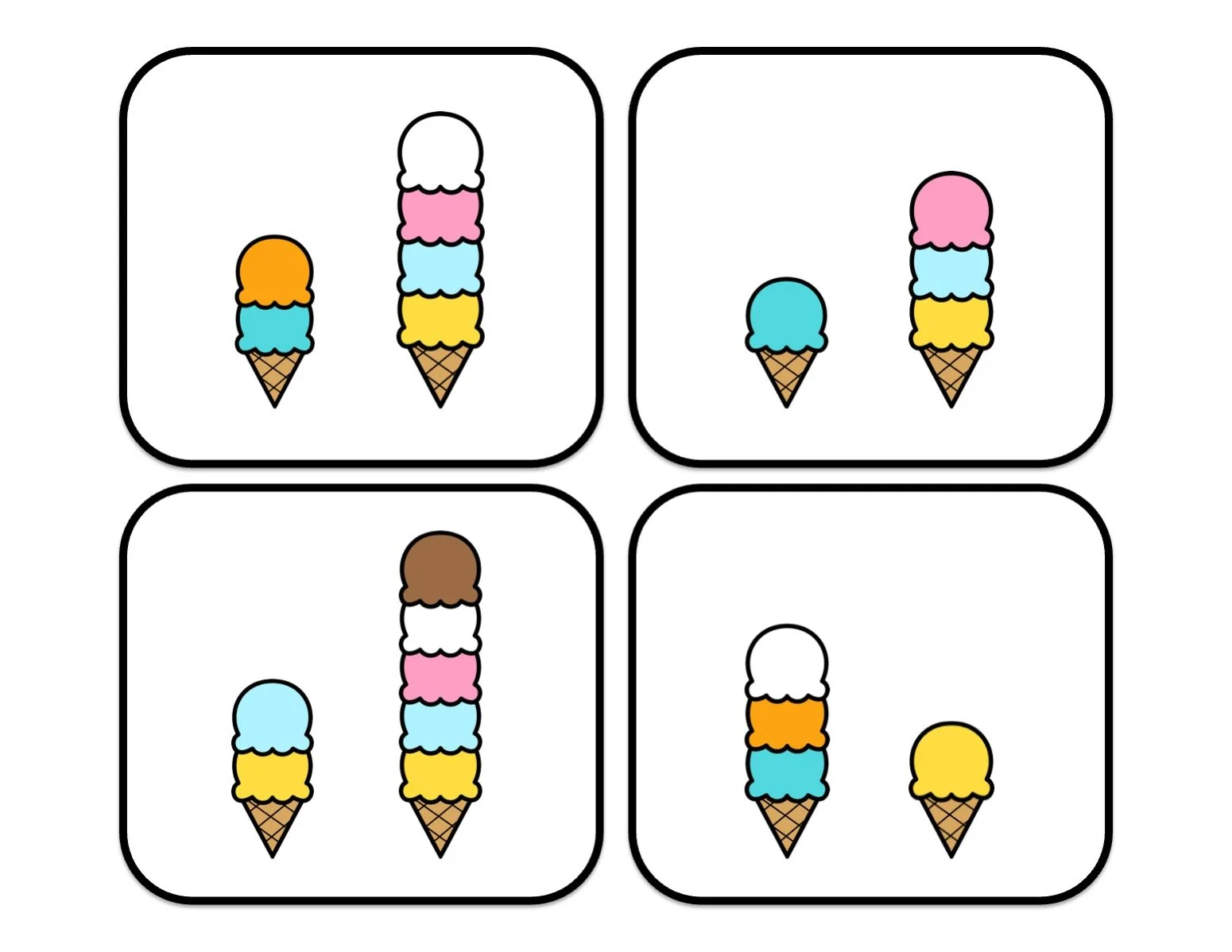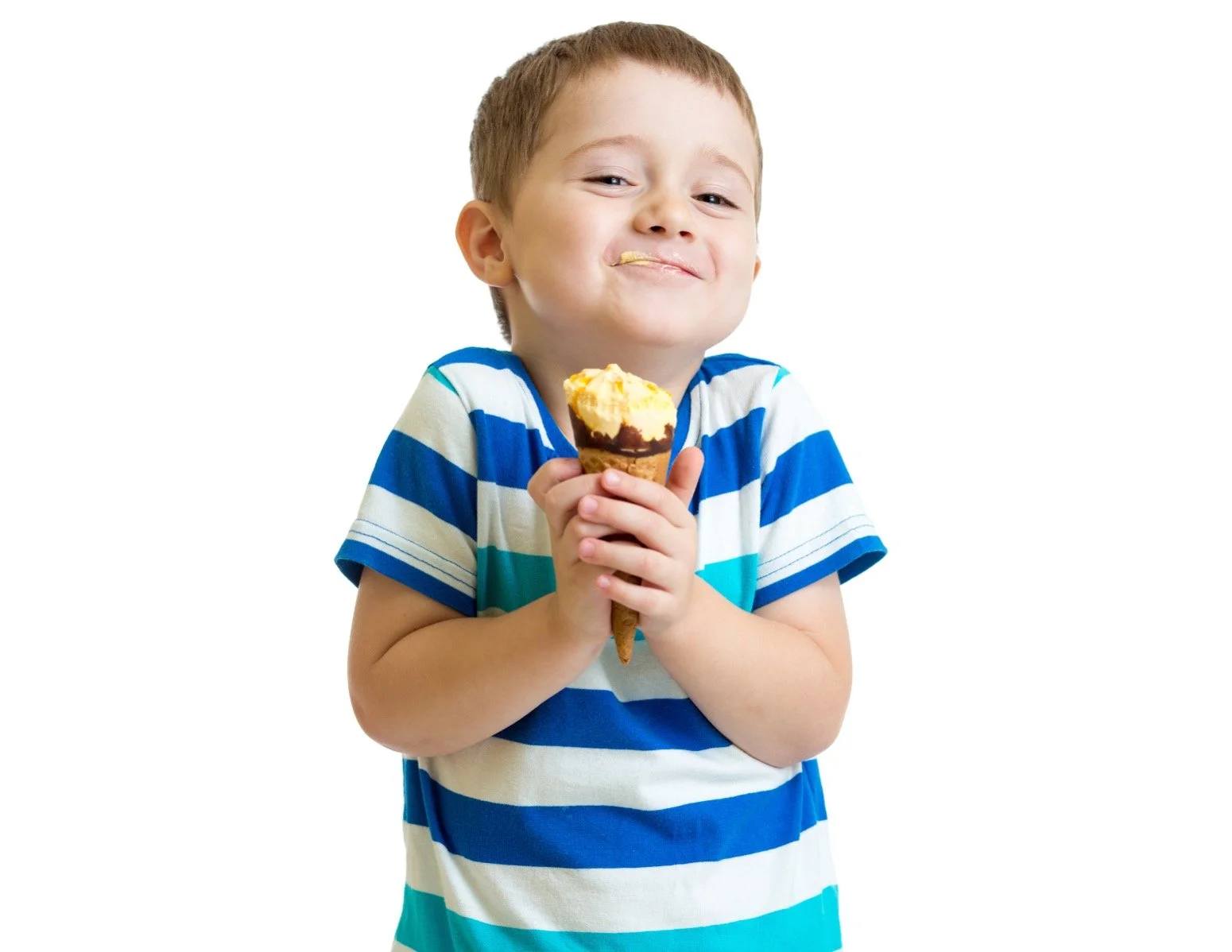Teaching Language Skills with Ice Cream: Describing, Sequencing, and More
Today we’re talking about ice cream.
When helping your child build language, it’s good to use high-interest topics, like Ice cream!
Scoop up some ice cream and teach them some new vocabulary.
Description
Let’s start with a basic description. Here’s a good, simple formula: a word + category + characteristic.
This is one description of ice cream: Ice cream (word) is a food (category) that is cold (characteristic).
There are many ways to describe it.
Let’s talk more about the characteristics of ice cream to expand our language.
Here are some vocabulary words that we could use.
Ice cream is mostly made of milk and sugar.
It can be scooped, swirled, molded, or dipped.
Ice cream can be served in a cone, in a cup, in a sandwich, or on a stick.
Ice cream melts.
How would you describe ice cream to someone who didn’t know what it was?
Parts of a Whole
Learning about the parts of an ice cream sundae can also expand our vocabulary.
This sundae is served in a glass dish and has 4 parts: ice cream, chocolate syrup, a cherry, and a cookie.
Have you ever made an ice cream sundae?
Was it the same as this one or different?
Sequencing
How about we talk about how an ice cream sundae is made?
The pictures below will give us clues for what to say.
If you ever need help organizing your ideas, try drawing them out on paper.
Visuals like these can also be a great tool for keeping you on track when you’re sharing something out loud.
Get your bowl, spoon, ice cream, and toppings.
Collect everything you need to make your sundae and place it on the counter.
Scoop the ice cream.
Use your spoon to scoop your favorite ice cream into the bowl. If the ice cream is too hard, let it sit out on the counter for a few minutes. Not too long or it will melt.
Add some toppings.
Toppings are what we add over the top of the ice cream or mixed in to make it a sundae. There are a lot of topping choices such as sauces, candy, and whipped cream. This girl is adding fudge sauce, whipped cream, and a cherry.
Enjoy your sundae.
Use your spoon to scoop out a bite and enjoy every bit of your creation!
Did you notice that I included a picture of what the finished ice cream sundae will look like?
This is important.
Having a visual of the result can act as a road map. It gives us a clear idea of what’s expected and helps move us through steps more independently.
Parent Tip: Draw or take a photo of completed tasks to help your child be more independent.
Here is an example for getting ready for school:
Put everything they need to take with them to school by the front door (shoes, backpack, jacket, lunch, etc.).
Print the picture and put it up where they can see it. Now they can self-check to see if they have everything they need for the day.
This may need to be updated a few times a year for changing weather conditions or if they join a sport or an after-school activity.
Other ways to use this strategy:
What a clean room looks like.
What an empty backpack looks like.
What folded and put away clothes look like.
What ready for bed looks like (a picture of your kid with their face washed, teeth brushed, and in their pajamas).
Basic Concept: More
Let’s practice the basic concept more. Can your child point to the ice cream cones that have more scoops?
Draw and Tell
Great job talking about ice cream!
Draw a picture of you eating your favorite ice cream and tell someone about it.
Don’t forget to add details:
Color the ice cream to match your favorite flavor.
Where do you eat ice cream? Add details to show if it’s inside or outside.
How do you feel when you eat ice cream? Draw that emotion on your face.
Illustration Credits: Kari Bolt, Bunny on a Cloud, LittleRed

